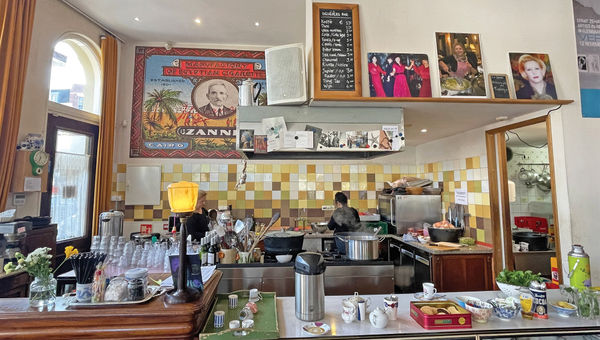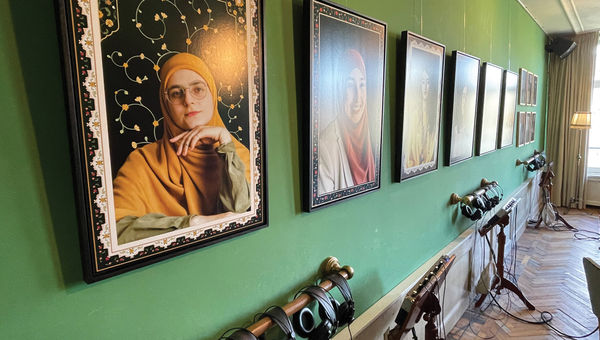A "second city" is generally considered to be the second-largest or runner-up among culturally significant capitals in a region. In this third story in a series, Brittany Chrusciel invites readers to consider Rotterdam as a desirable, first-rate alternative to Amsterdam. Read part one about Lyon, France, and part two about Venice.
In an effort to curb overtourism, Amsterdam is beginning to crack down on everything from cruise ships to cannabis. And while the appeal of the Dutch capital city stretches beyond red lights and green delights to world-class museums and charming neighborhoods, many don't look to extend their Netherlands stay beyond this single city. That is a mistake.
A true second city, industrial Rotterdam trails only Amsterdam in terms of population but is greater in size and scope. While many immigrants left from its massive port to start a new life overseas, Rotterdam is now home to a multicultural mix of more than 173 nationalities.
After being decimated in World War II, Rotterdam rose from the ashes of its postwar devastation with a strong vision for the future. The result is a cutting-edge city making tremendous use of its international influence while remaining distinctly Dutch.
Amsterdam has centuries-old canal homes. Rotterdam has striking, modern architecture.
The calling card of Amsterdam is its canals, which even early -- and wealthy-- merchants and residents could appreciate. The narrow, gabled homes lining the city's signature waterways sprang up during the 17th century and remain today (albeit in some cases slightly tilted).
Rotterdam is first noted in history books in the late 1200s, but it came to prominence in the 1600s when a sea route to the East Indies spring-loaded Dutch shipping and commerce.
However, while Rotterdam is far from a new city, it was entirely rebuilt after being razed during WWII. A metropolitan center with hundreds of years of history was forced to step boldly into the middle of the 20th century with a renewed eye for urban planning. The result is a variety of contemporary architectural styles that create its present skyline.
Home to many of the tallest buildings in the Netherlands, Rotterdam is dubbed "Manhattan on the Meuse" for its horizon of skyscrapers.
The Lijnbaan, opened in 1953, is the main shopping street of Rotterdam. It's notable as the first purpose-built pedestrian-only street in Europe and the inspiration for similar car-free commercial centers across the U.S. The De Doelen concert hall, rebuilt in 1966, is known for its acoustic perfection. The Erasmusbrug, constructed in 1996, is a stunning, stark-white suspension bridge known to locals as "the swan."

A guest chef cooking their specialty in the Verhalenhuis Belvedere's Folk Kitchen. Photo Credit: Brittany Chrusciel
Amsterdam has "coffee shops." Rotterdam has actual coffee shops.
The Netherlands decriminalized cannabis in the early 1970s, and the open availability of this largely forbidden substance has since drawn curious visitors from abroad for decades. While using the drug in public is still not permitted, establishments known as coffee houses are omnipresent across Amsterdam. There, customers can purchase edibles and pre-rolled joints and even enjoy them on-site.
While the same laws and availability of cannabis apply to other cities throughout the Netherlands, including Rotterdam, it's not as much of a draw for tourists as it is in Amsterdam. What we found instead during our stay was an actual coffee house -- and so much more -- that encourages storytelling from the substantial local immigrant population to be kept on permanent record.
The Verhalenhuis Belvedere, also called the Stories House, is situated in the neighborhood of Katendrecht, which became the first Chinatown in Europe after hundreds of Chinese workers were imported as cheap labor during a sailors' strike in 1911.
The history of the building, including its life as a secret jazz club and hiding place for Jewish children during WWII, is enough to fill pages. But its current role as a cafe/exhibition space/story studio strives to honor the Belvedere's many roles over the years as a community hub for all cultures.
In addition to artists-in-residence and a place for residents to record their stories in the attic, the cafe hosts a guest chef every day in its Folk Kitchen. This exposes patrons to new cuisines for lunch, alongside a bevy of traditional Dutch treats. The idea is Rotterdam in a pastry shell.

The upper level of the Verhalenhuis Belvedere includes a listening studio where visitors can hear immigrants' stories. Photo Credit: Brittany Chrusciel
Amsterdam has bicycles. Rotterdam has e-bikes.
As soon as you set foot in Amsterdam, you will likely have to navigate a busy bike lane. Cycling is part of the DNA of the city, which has more bicycles than inhabitants. Less than 50 miles away, Rotterdam is bustling, as well, but the 125-square-mile municipality is more spread out. Commuting by car is the default here, but residents and local government are working to improve the public transportation of the city, including its cycling network.
Currently, there are more than 350 miles of bike paths around Rotterdam. But due to its sprawling layout, it makes sense that so many are adopting electric bicycles, a 21st-century twist on the classic that befits this more modern second city.
E-bikes have been gaining in popularity worldwide over the past few years, but they shine as a more accessible option for anyone looking to explore a destination on two wheels. With so much ground to cover in Rotterdam, e-bikes are a boon for tired tourists as well as car-free commuters.
Along with several locations that rent e-bikes, the city has also incorporated charging stations in free bike-parking areas. Another option is bike sharing: global company Donkey Republic specializes in e-bike sharing with an app. Plan a route along the New Meuse River or a route winding through local parks and forests -- with a few windmills along the way, of course.
Guided e-bike tours are highly recommended for the uninitiated and include themes from architecture to cuisine.